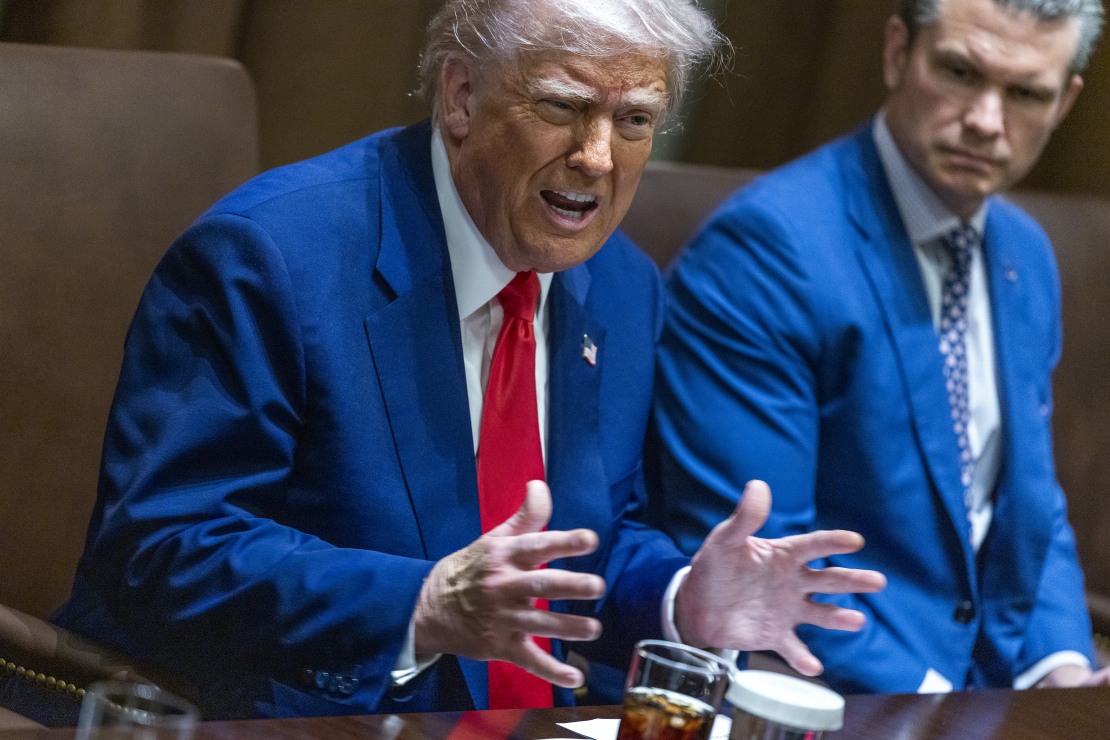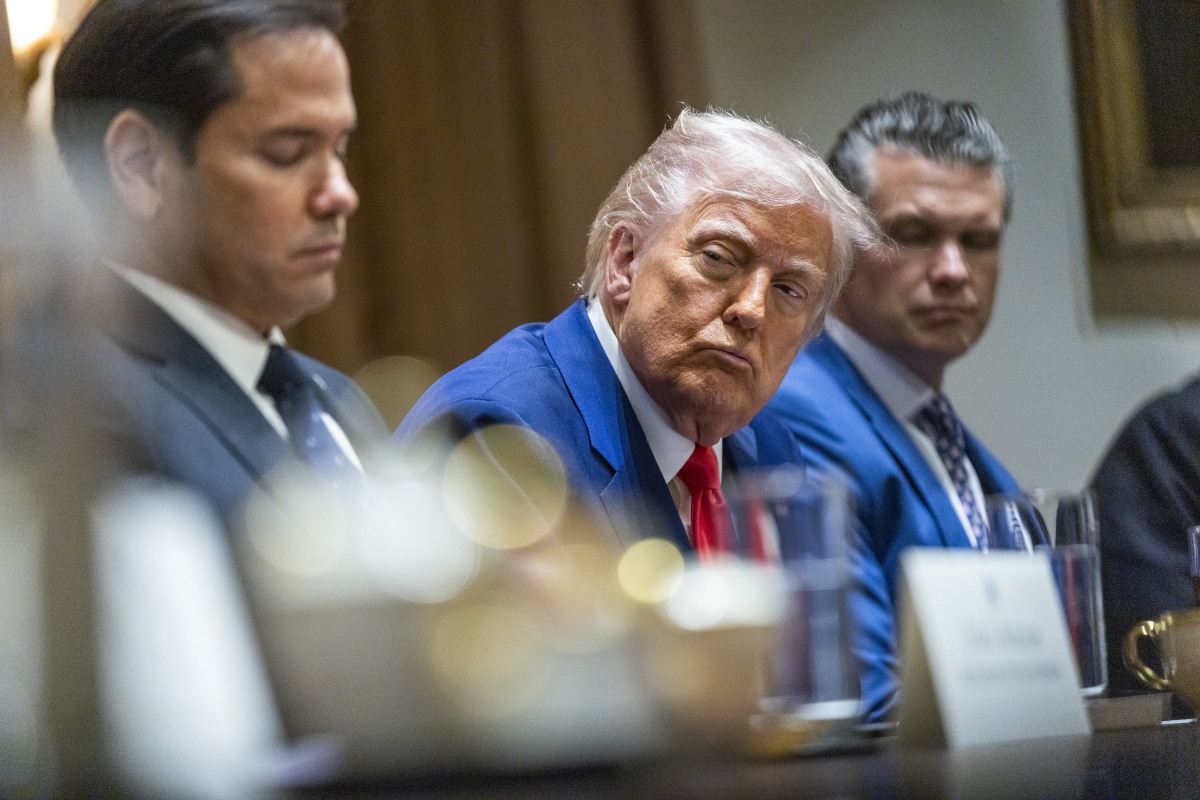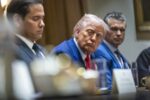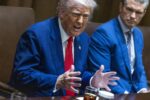
In early April, Donald Trump announced an insane tariff program on every country except Russia and North Korea. The Trump Tariff plan devastated the domestic and international markets, with trillions of dollars being wiped out every single day. On Wednesday, Trump finally announced that he was hitting pause on the original tariff plan, but they would still do a baseline 10% tariff on all foreign goods, and there would still be huge tariffs on Chinese goods. After his Wednesday announcement, the American markets made a significant rebound. Then on Thursday, as the reality set in that Trump economics are incredibly stupid and dangerous, the markets crashed again. The S&P fell by 3.46% and at one point on Thursday, the Dow was down as much as 2100 points.
Financial analyst Tom Lee summarized the week: “In the last few days, we have had many conversations with macro fund managers. And their concern is that the White House is not acting rationally, but rather on ideology. And some even fear that this may not even be ideology. A few have quietly wondered if the President might be insane.” I’m glad these people are finally getting their heads out of their asses and realizing that Trump is profoundly stupid and crazy. Axios also did a state-of-play summary about how Trump has done irreparable damage to the economy:
There is now sand — a lot of it — in the gears of global commerce, and it won’t be going away in the foreseeable future. Trump may have backed down on some of the most extreme — and hardest to justify — trade barriers he announced a week earlier. But the tariffs that remain in place still make for a more fractured global economy, albeit with slightly different fractures.
Instead of waging an all-out trade war with practically all U.S. trading partners, all at once, the new policy alignment amounts to an escalated trade war with China amid ongoing skirmishes with the rest of the world. The era of frictionless global trade is over.
It’s hard to overstate how much the escalation in U.S. trade policy over the last two months — and especially the last eight days — dwarfs anything in living memory. Even after Trump’s retreat Wednesday, he is imposing a minimum 10% tariff on pretty much all goods from all countries. The last time the average tariff rate was that high was 1943. But a reciprocal 125% tariff on Chinese imports, plus additional tariffs on steel, aluminum and automobiles, brings the average effective tariff rate to 25.3%, per the Yale Budget Lab’s calculations, the highest since 1909. Even after trade patterns shift toward lower-tariff countries (more Chinese manufacturing activity shifting to 10%-taxed Vietnam, for example), the Yale team estimates it will settle at 18.1%, the highest since 1934.
The big open question over the last eight days has been whether Trump’s aggressive “reciprocal” tariffs were meant to be an over-the-top starting point for negotiation or a new standing feature of the global economy. Now we know that the answer is “yes.”
On one hand, he backed off the elevated tariffs for most countries for 90 days because, he claimed, 75 countries were clamoring to make a deal. That points to the “let’s negotiate” theory. But the 10% baseline tariff looks to be the new cost of business for anyone relying on imports. It’s distortionary and expensive, but low enough that there could be more room for firms to absorb it in the form of lower margins or tougher negotiations with suppliers than, say, the 46% levy originally proposed for Vietnam.
Wednesday’s backdown shows that Trump, for all his trade war zeal, does respond to normal incentives. A plunging stock market, countless calls from CEOs and leaders of other countries, and frustrated Republican lawmakers clearly got his attention. The bond market’s role looms particularly large, as a surge in long-term interest rates since Monday — and a corresponding plunge in Treasury bond prices — raised the prospect of ongoing damage to the U.S. government’s ability to borrow. U.S. rivals surely took note; the notion of using the global bond markets as a tool of geopolitics is not unknown.
The bottom line: Global trade as most living Americans know it is over, even if the scale of the disruption ahead is lower than it was 24 hours ago.
[From Axios]
I kept hearing the bond market analysis throughout the week, especially ahead of Trump’s pitiful backdown on Wednesday – that was the thing which got his attention more than anything else, the panic from the bond market. His economic advisors were also pleading with him to understand the very basics of macroeconomic policy, which he still refuses to understand. Anyway, we’re screwed.

Photos from Trump’s cabinet meeting on 4/10/25, courtesy of Cover Images.
-
Cabinet meeting in the Cabinet Room of the White House
Featuring: President Donald Trump
Where: Washington, District of Columbia, United States
When: 10 Apr 2025
Credit: Shawn Thew/POOL via CNP/INSTARimages.com
-
Cabinet meeting in the Cabinet Room of the White House
Featuring: President Donald Trump, Marco Rubio, Pete Hegseth
Where: Washington, District of Columbia, United States
When: 10 Apr 2025
Credit: Shawn Thew/POOL via CNP/INSTARimages.com
-
Cabinet meeting in the Cabinet Room of the White House
Featuring: President Donald Trump, Pete Hegseth
Where: Washington, District of Columbia, United States
When: 10 Apr 2025
Credit: Shawn Thew/POOL via CNP/INSTARimages.com







